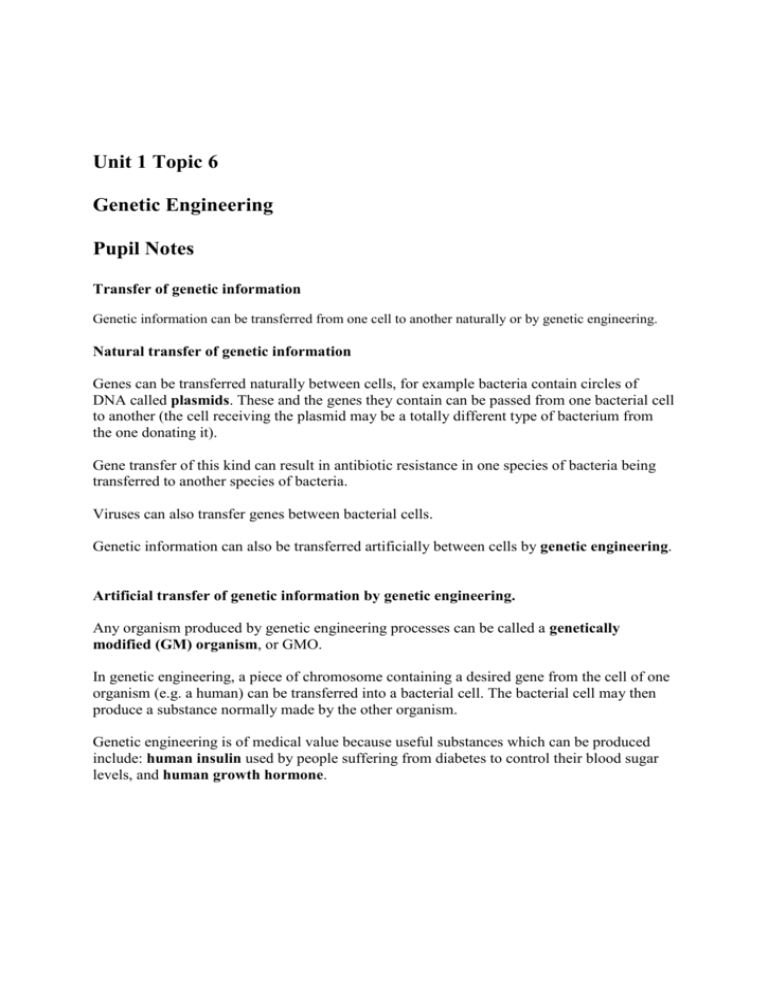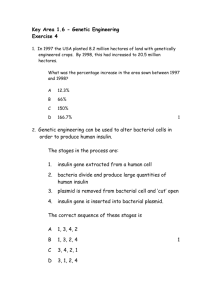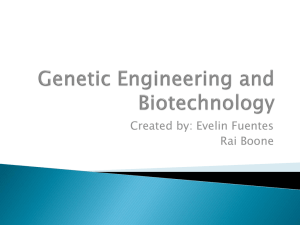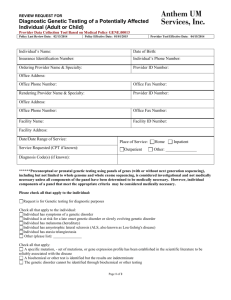Unit 1 topic 6 Genetic Engineering
advertisement

Unit 1 Topic 6 Genetic Engineering Pupil Notes Transfer of genetic information Genetic information can be transferred from one cell to another naturally or by genetic engineering. Natural transfer of genetic information Genes can be transferred naturally between cells, for example bacteria contain circles of DNA called plasmids. These and the genes they contain can be passed from one bacterial cell to another (the cell receiving the plasmid may be a totally different type of bacterium from the one donating it). Gene transfer of this kind can result in antibiotic resistance in one species of bacteria being transferred to another species of bacteria. Viruses can also transfer genes between bacterial cells. Genetic information can also be transferred artificially between cells by genetic engineering. Artificial transfer of genetic information by genetic engineering. Any organism produced by genetic engineering processes can be called a genetically modified (GM) organism, or GMO. In genetic engineering, a piece of chromosome containing a desired gene from the cell of one organism (e.g. a human) can be transferred into a bacterial cell. The bacterial cell may then produce a substance normally made by the other organism. Genetic engineering is of medical value because useful substances which can be produced include: human insulin used by people suffering from diabetes to control their blood sugar levels, and human growth hormone. Stages in genetic engineering plasmid 1. Gene to be chromosome transferred is identified and cut from the chromosome using an enzyme bacterial cell containing plasmid Plasmid removed from cell 2. Gene is joined to the plasmid using an enzyme Plasmid cut open using an enzyme 3. Plasmid containing the transferred gene is placed into a bacterial cell 4. “Host” bacterial cell and the plasmid it contains reproduce to make more copies of the transferred gene 5. Protein made by the gene, e.g. insulin, is extracted and purified Human insulin was first produced by this method in 1982. Advantages of genetic engineering include, given suitable conditions, the bacteria used for genetic engineering can be grown quickly, the product can be produced relatively cheaply and large quantities of product can be manufactured.









